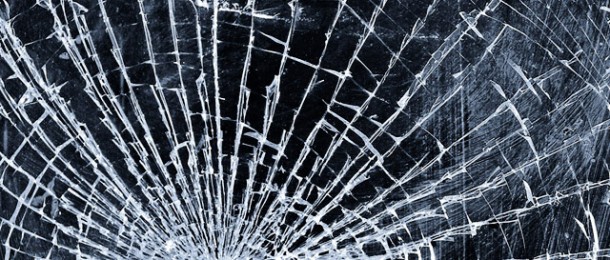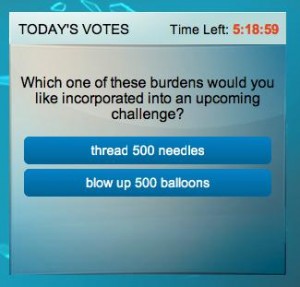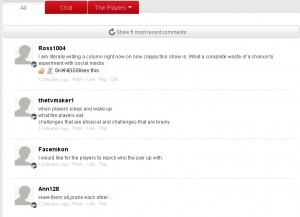One Hit, And One Miss, On Social Media Integration
Ross Slutsky | Washington DC
Network executives have been buzzing for years about finding new ways to add social media into the television experience. No TV program worth a mention doesn’t have its own Twitter feed, Facebook page or some other social networking component.
 But are all these digital efforts really hitting the mark? Does television really know what to do with social media, or is it just playing around with old ideas?
But are all these digital efforts really hitting the mark? Does television really know what to do with social media, or is it just playing around with old ideas?
Two current examples may offer some answers.
First, ABC’s new take on adding social media to “reality” TV misses a valuable opportunity to do something interesting with its experimental format.
When I first heard about the premise of “The Glass House”, it seemed promising. There are fourteen contestants and each week, the audience determines via an app integrated via Facebook and/or Twitter which tasks the contestants have to complete, who will be voted off, and, ultimately, who will win $ 250,000. The show includes a discussion section on its website where users can talk about who they think should be voted off and why.
Additionally, the show integrates live streaming that enables people to peek in on what is happening inside of the house at selected times during the week when the show isn’t on air. (For any of our more voyeuristic readers, you can view the live feed between 11 PM and 3 AM on Mondays, as well as from 3 PM to 4 PM on Tuesday, Wednesday, and Thursday.)
The Glass House advertises itself as a clever integration of social media platforms that makes users feel empowered. If it were, this author could have waxed poetic about the voyeuristic and controlling power dynamic of the show and make reference to Philip Zimbardo’s infamous prison experiment.
Instead, ABC appeared to dumb down the social media integration in a manner – at least from this perspective – that almost patronizes the audience.
The tagline of the show says that “you tell the players what to do,” but this statement is misleading at best.
On the Facebook app, users can make choices between unimportant, interchangeable aspects of the show. For example, “thread 500 needles” or “blow up 500 balloons.” Some choice. There were five or six other similar polls that users could answer yesterday, all of which were equally inconsequential.
This is not audience participation in any meaningful sense of the term. ABC had the resources to create a much more compelling user engagement platform than the one that the producers rubber stamped. The discussion section is even more disappointing. It is, basically, a glorified commenting system that does not allow for lasting user feedback.
What do we have here? A system that (to its credit) enables users to “like” and comment on each other’s statements, but does not have any other redeeming qualities.
A forum would have been much better. It would have enabled users to talk about particular topics in an organized and meaningful way. There could have been threads for each player, comments about the layout of the house, a miscellaneous suggestion area where users make suggestions for elements they would like to see integrated into and/or removed from the show, and during the airing of each episode, ABC could have removed a few of the fake fights and included a two minute highlight about how the show was changing in response to user feedback.
But no. ABC decided to only engage with the audience in the most superficial way imaginable.
To put this in perspective, let’s look at a more interesting/successful instance of social media integration in television: “The Stream.“
In wake of the Arab Spring, Al-Jazeera launched their widely praised, webby winning series The Stream, which calls itself a “social media community with its own daily TV show.” Unlike The Glass House, The Stream lives up to its tagline, dexterously weaving real time user feedback into programming and using online forums to help inform its journalistic content.
The critical difference between the two shows is that the web community for The Stream has a substantive effect on the content of the program. Rather than having viewers vote on whether the news anchor should wear a red tie or a blue tie, in the words of co-host Ahmed Shihab-Eldin, “The idea is to tap into conversations that are already happening around the world from people who understand the issues but don’t have the opportunity to participate in mainstream media.”
As Digital Frontiers will explore in the coming weeks, there may well be a bright future for social TV. However, the history books are unlikely to look back on The Glass House as an innovator in this area, and, at least in this author’s opinion, it won’t even be worth acknowledging in a footnote.



One response to “Shattered Glass”
[…] date with the world's activities could take all day if we let it. Instead, mos more… Shattered Glass – Voice of America (blog) – blogs.voanews.com 06/20/2012 Voice of America (blog)Shattered GlassVoice of America […]